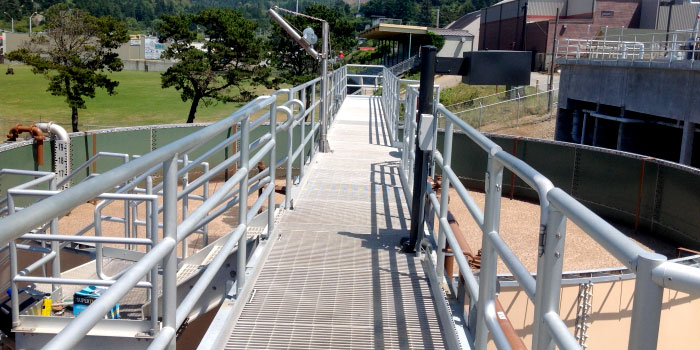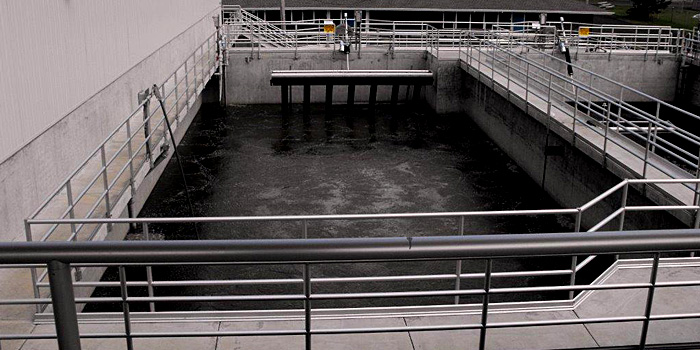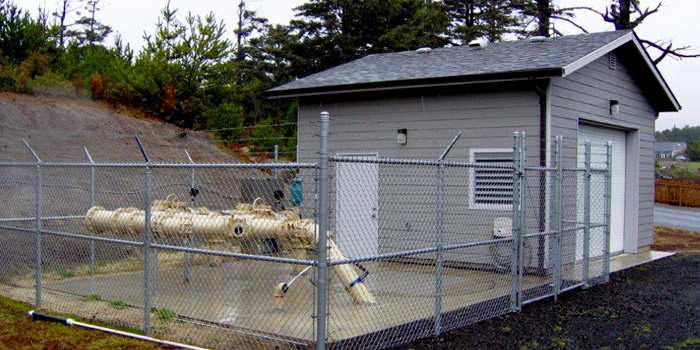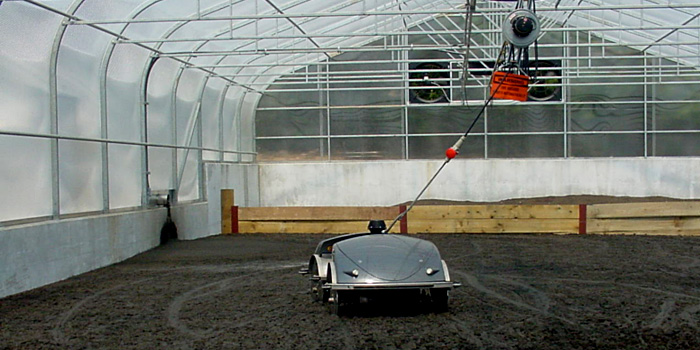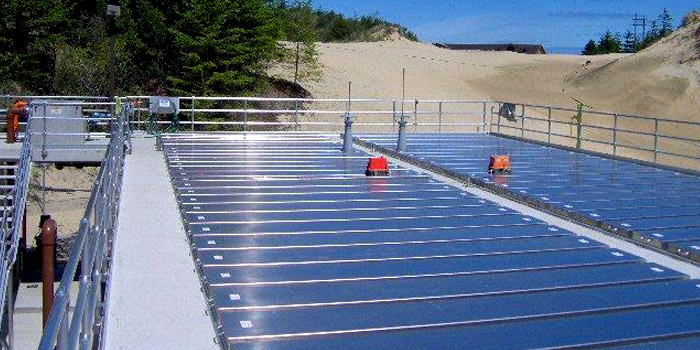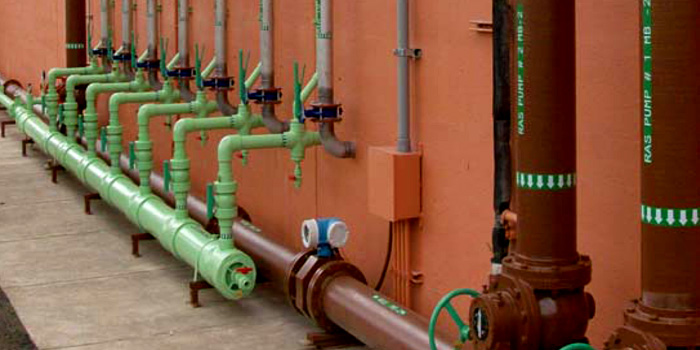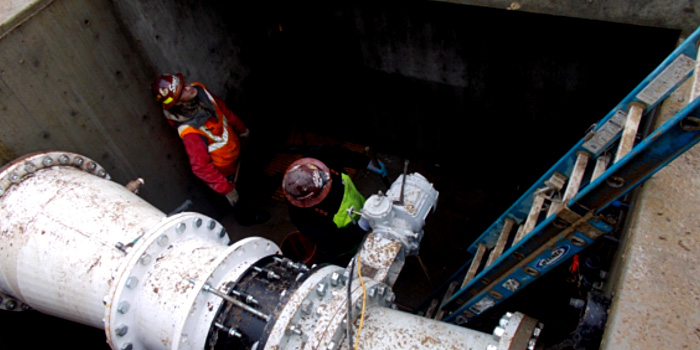Wastewater Treatment Plant Improvements
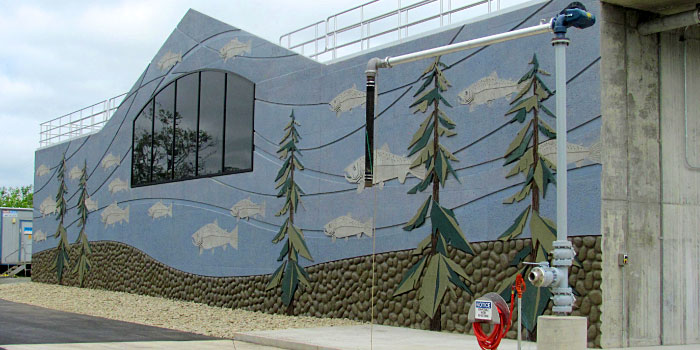
City of Coquille, Oregon
As with many public works projects, this construction required a multi-step process which began with a new public works garage and demolition
of the old public works building. Removal of contaminated soils from the old building was required, along with installation and removal of
preload, rather than driving pile, in order to stabilize and compress soils on the construction site. Once these phases of the project were
completed, construction of the plant began and proceeded while maintaining operation of the existing plant.
This $8.1 million plant, which is highly visible to the public at its location on State Highway 42, was completed just recently, financed
in large part by the U.S. Department of Agriculture's Rural Development funds, Oregon Business Development Department Water/Wastewater
Financing Program and Oregon Department of Environmental Quality Clean Water State Revolving Fund.
The funding of Coquille's new plant was typical of nearly all the major projects where Dyer has been involved. Dyer works with Owners from
assessment of needs to design and funding, as well as construction management and inspection, and training of employees to operate the new
facilities. Because these facilities are built in small rural communities with often severely limited economic means, they simply could not
be built without the assistance of various types of funding, an area where Dyer provides many years of experience.
In addition, a biosolids dewatering unit included in a Wastewater Facilities Master Plan to be constructed as funds became available is currently in
construction, five to ten years ahead of schedule.
This 6.12 mgd wastewater plant was completed in 2013.The existing influent pump station was rehabilitated, a new SBR was constructed along
with a new ultraviolet disinfection system with flow control galley. Modifications were made to the solids treatment stream , including
rehabilitation of the existing digester and addition of a new membrane sludge thickener (a new process proven to reduce volume for export),
conversion of the secondary clarifier into an aerated sludge storage tank, rehabilitation of the existing sludge storage tank and conversion
of existing chlorine contact tank into a third sludge storage tank. Plant site improvements included controls for the plant, a new operations
building with laboratory, a new blower and storage building and conversion of the control building into a public works building, along with
extensive improvements to the yard, paving, underground utilities and landscaping. Design was focused on removal of phosphorus from the waste stream as the city
of Coquille was under a Mutual Agreement and Order with the Oregon Department of Environmental Quality.
This project won a 2014 Excellence in Concrete award for Craftsmanship for the team: Owner/Developer - City of Coquille; Civil Engineer - The Dyer
Partnership Engineers & Planners, Inc.; Civil/Structural Engineer - VLMK Consulting Engineers; Architect Lon Samuels; General Contractor - Wildish
Construction; Ready Mix Supplier - Knife River Corp.

